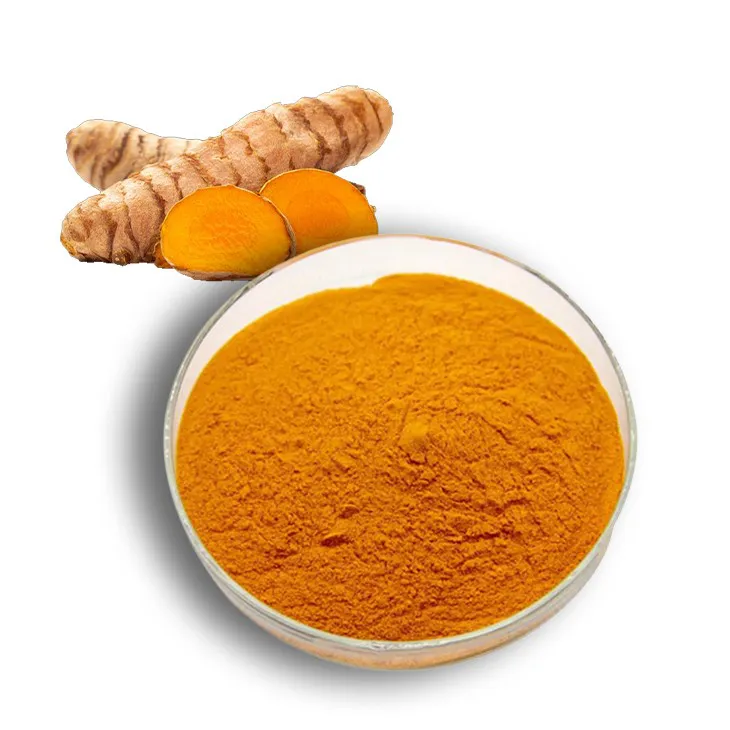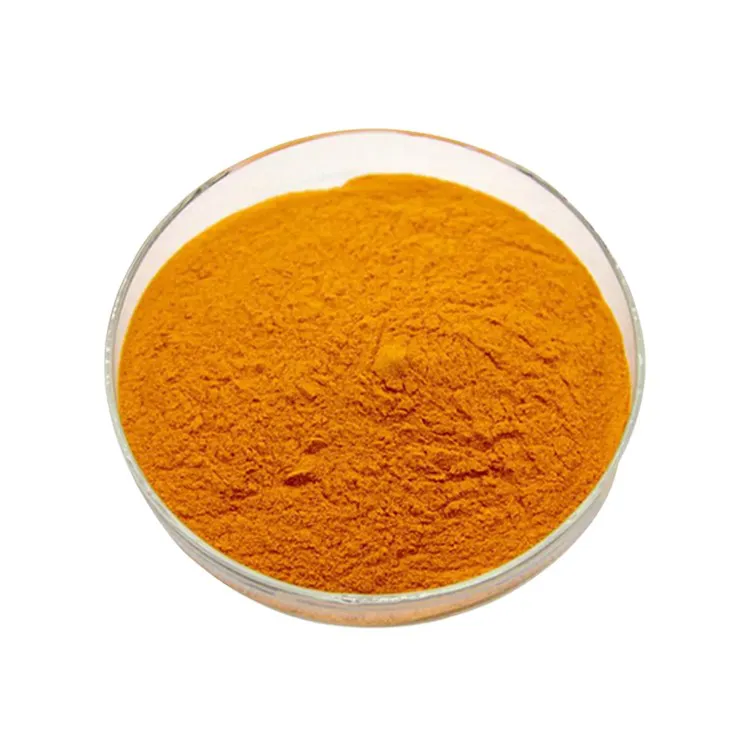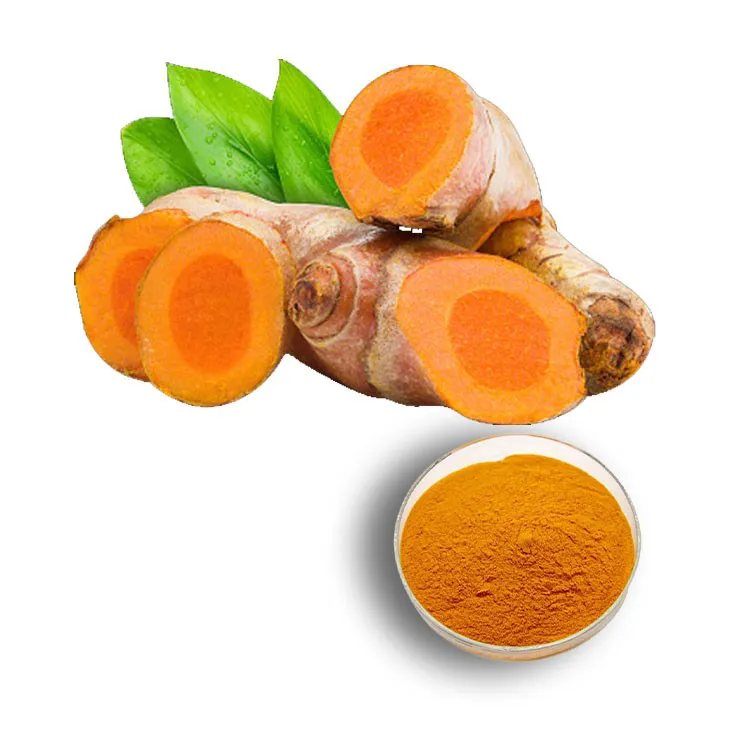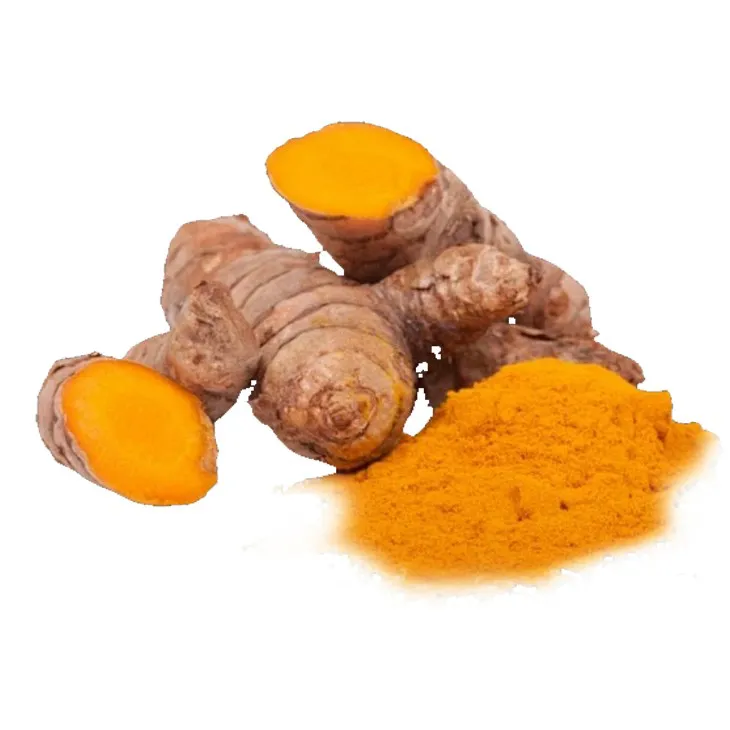- 0086-571-85302990
- sales@greenskybio.com
Curcumin: Benefits, Uses and How It Can Improve Your Home.
2024-11-11

Introduction
Curcumin is a compound that has been garnering significant attention in recent years. Derived from the turmeric plant, it is known for its vibrant yellow color and a wide range of properties that make it highly valuable in various aspects of life. From health benefits to diverse uses and even its potential to enhance the home environment, Curcumin is truly a remarkable substance.

Health Benefits of Curcumin
1. Anti - Inflammatory Properties
One of the most well - known health benefits of curcumin is its anti - inflammatory nature. Chronic inflammation is associated with numerous diseases, including heart disease, arthritis, and certain cancers. Curcumin has been shown to target multiple steps in the inflammatory pathway, reducing the production of inflammatory mediators. For example, it can inhibit the activity of enzymes such as cyclooxygenase - 2 (COX - 2), which is involved in the production of prostaglandins, substances that contribute to inflammation. This makes curcumin a potential natural alternative to non - steroidal anti - inflammatory drugs (NSAIDs) for some individuals, with fewer side effects.
2. Pain Alleviation
Linked to its anti - inflammatory properties, curcumin may also help in alleviating pain. In cases of arthritis, where joint inflammation causes pain and stiffness, curcumin has shown promise. Studies have found that it can reduce pain levels in patients with rheumatoid arthritis and osteoarthritis. It may work by reducing the swelling and inflammation in the joints, thereby decreasing the pain signals sent to the brain. Additionally, curcumin's antioxidant properties may also play a role in protecting the nerves from damage, which can further contribute to pain relief.
3. Promoting Heart Health
Curcumin can have a positive impact on heart health. It has been shown to improve endothelial function, which is crucial for maintaining healthy blood vessels. The endothelium is the inner lining of blood vessels, and when it functions properly, it helps in regulating blood pressure, preventing blood clot formation, and reducing the risk of atherosclerosis. Curcumin can also lower levels of LDL (low - density lipoprotein) cholesterol, often referred to as "bad" cholesterol, while increasing HDL (high - density lipoprotein) cholesterol, or "good" cholesterol. By reducing inflammation in the blood vessels and improving lipid profiles, curcumin helps in maintaining a healthy heart.
4. Antioxidant Effects
As an antioxidant, curcumin can protect the body from oxidative stress. Oxidative stress occurs when there is an imbalance between the production of free radicals and the body's ability to neutralize them with antioxidants. Free radicals are highly reactive molecules that can damage cells, DNA, and proteins, leading to various diseases and aging. Curcumin can scavenge free radicals, preventing them from causing harm. It also has the ability to upregulate the body's own antioxidant defense systems, such as increasing the activity of superoxide dismutase and glutathione peroxidase enzymes.

Uses of Curcumin
1. Dietary Supplement
Curcumin is widely available as a dietary supplement. People take it in the form of capsules or tablets to potentially reap its health benefits. However, it is important to note that the bioavailability of curcumin when taken orally is relatively low. To improve its absorption, it is often combined with other substances such as piperine (found in black pepper). When used as a dietary supplement, curcumin can be incorporated into a daily health routine, especially for those looking to support their overall health, manage inflammation, or promote heart health.
2. In Skin - Care Products
Curcumin has also found its way into the world of skin - care products. Its antioxidant and anti - inflammatory properties make it a valuable ingredient in creams, lotions, and serums. For example, in anti - aging products, curcumin can help protect the skin from free - radical damage, reducing the appearance of wrinkles and fine lines. In products for acne - prone skin, it can reduce inflammation and redness associated with breakouts. Additionally, curcumin may also have antibacterial properties that can help keep the skin clean and prevent infections.
3. In Cooking
Of course, curcumin is a familiar ingredient in cooking, especially in Asian and Middle Eastern cuisines. Turmeric, which contains curcumin, is used to add color, flavor, and a touch of warmth to dishes. It is a key component in curries, giving them their characteristic yellow color. Beyond just aesthetics and taste, when consumed in food, curcumin can provide some of the health benefits mentioned earlier, making it a nutritious addition to meals.

How Curcumin Can Improve Your Home
1. Natural Fabric Dye
Curcumin can be used as a natural fabric dye at home. It imparts a beautiful warm and earthy color to fabrics. To use it as a dye, one can start by preparing a dye bath. Boil water and add ground turmeric (which contains curcumin) to it. Then, soak the fabric in the dye bath for a period of time, depending on the desired intensity of color. The longer the fabric is soaked, the deeper the color will be. Not only does this provide a natural and non - toxic alternative to commercial dyes, but it also gives a unique and rustic look to the fabric. Moreover, as curcumin has antibacterial and antifungal properties, the dyed fabric may also have some level of protection against microbial growth.
2. Household Antibacterial and Antifungal Agent
As mentioned, curcumin has antibacterial and antifungal properties, which can be harnessed to improve the home environment. It can be used to clean and disinfect surfaces in the home. For example, a solution made with diluted Curcumin Extract can be used to wipe down kitchen countertops, cutting boards, and bathroom fixtures. This can help in reducing the presence of harmful bacteria and fungi, such as Escherichia coli (E. coli) and Candida albicans. In addition, it can be used to treat wooden furniture or items to prevent fungal growth, especially in humid environments.
3. Air Freshener Ingredient
Curcumin can also be an ingredient in air fresheners. When combined with other natural ingredients like essential oils, it can create a pleasant and refreshing aroma in the home. For instance, a mixture of curcumin, lavender essential oil, and water can be sprayed in a room to not only freshen the air but also potentially benefit from curcumin's antibacterial properties. This provides a natural alternative to commercial air fresheners that often contain synthetic chemicals.

Conclusion
In conclusion, curcumin is a multi - faceted compound with a plethora of benefits. Its health - promoting properties range from reducing inflammation and pain to enhancing heart health. In terms of uses, it is not only a dietary supplement and skin - care ingredient but also has a place in cooking. At home, it can be used in various ways, from dyeing fabrics to acting as a natural antibacterial and antifungal agent and even as an ingredient in air fresheners. As more research is conducted on curcumin, we can expect to discover even more applications and benefits of this wonderful compound.

FAQ:
What are the main health benefits of curcumin?
Curcumin has several health benefits. It may help in alleviating pain and promoting heart health. There are also indications that it has anti - inflammatory properties which can be beneficial for various health conditions.
How can curcumin be used as a dietary supplement?
Curcumin can be taken as a dietary supplement in the form of capsules or tablets. It is often recommended for those who may not get enough of it through their regular diet. However, it's important to follow the recommended dosage instructions as excessive intake may have potential side effects.
Can curcumin really be used in skin - care products? How?
Yes, curcumin can be used in skin - care products. Its antioxidant and anti - inflammatory properties make it potentially beneficial for the skin. It can be incorporated into creams, lotions, or masks, which may help in reducing skin inflammation, fighting signs of aging, and improving overall skin health.
How does curcumin dye fabrics?
Curcumin can dye fabrics naturally. When used for dyeing, it binds to the fabric fibers and imparts a warm and earthy color. The exact process may involve soaking the fabric in a solution containing curcumin for a certain period of time to achieve the desired color.
What antibacterial and antifungal benefits does curcumin bring to home items?
When used on home items, curcumin's antibacterial and antifungal properties can help in reducing the growth of harmful bacteria and fungi. For example, if used on fabrics, it can prevent the growth of mold and bacteria that may cause unpleasant odors or deterioration of the fabric.
Related literature
- The Bioactive Compound Curcumin: Its Biological Properties and Potential for Medicinal Applications"
- "Curcumin: A Review of Its' Effects on Human Health"
- "Applications of Curcumin in Textile Dyeing and Functional Finishing"
- ▶ Hesperidin
- ▶ citrus bioflavonoids
- ▶ plant extract
- ▶ lycopene
- ▶ Diosmin
- ▶ Grape seed extract
- ▶ Sea buckthorn Juice Powder
- ▶ Beetroot powder
- ▶ Hops Extract
- ▶ Artichoke Extract
- ▶ Reishi mushroom extract
- ▶ Astaxanthin
- ▶ Green Tea Extract
- ▶ Curcumin Extract
- ▶ Horse Chestnut Extract
- ▶ Other Problems
- ▶ Boswellia Serrata Extract
- ▶ Resveratrol Extract
- ▶ Marigold Extract
- ▶ Grape Leaf Extract
- ▶ blog3
- ▶ blog4
- ▶ blog5
-
Organic Tongkat Ali extract powder factory.
2024-11-11
-
How to make powder with ashwagandha extract.
2024-11-11
-
Rosehip extract manufacturers from China.
2024-11-11
-
The best cat's claw extract in nature.
2024-11-11
-
Chinese Dandelion Leaf Extract Suppliers.
2024-11-11
-
Green Tea Extract
2024-11-11
-
Honeysuckle Pollen
2024-11-11
-
Mulberry Extract
2024-11-11
-
Thunder God Vine Extract
2024-11-11
-
Dandelion Root Extract
2024-11-11
-
Tinospora cordifolia extract
2024-11-11
-
Peppermint Extract Powder
2024-11-11
-
Black Rice Extract
2024-11-11
-
Fenugreek Extract Powder
2024-11-11
-
Citrus bioflavonoids
2024-11-11





















